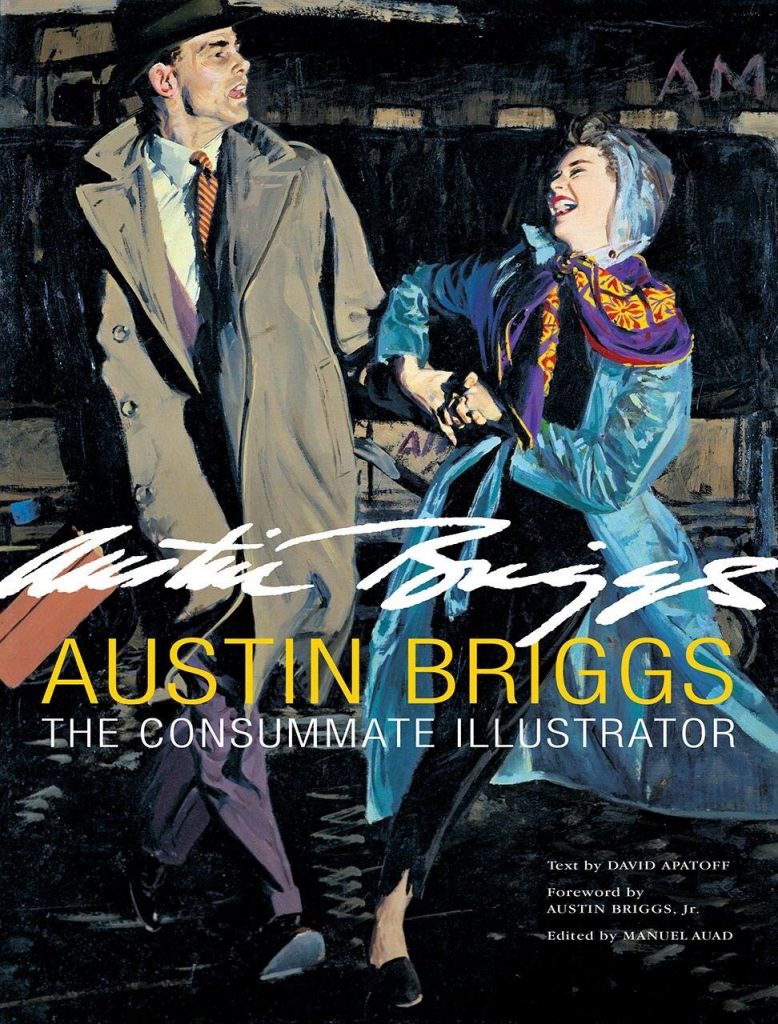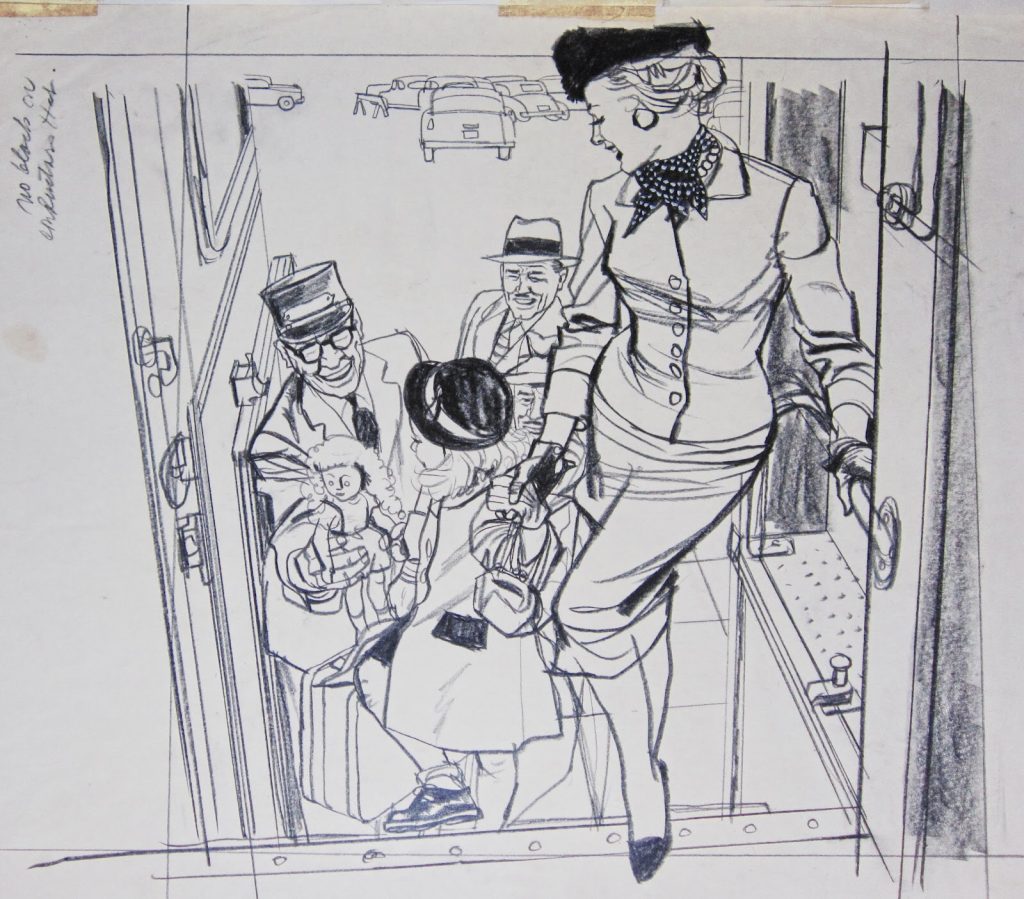
Comic artist and author David Roach, author of Masters of British Comic Art and more, regularly entertains and enthrals social media followers by highlighting the work of great comic artists and illustrators. But a deceptively simple image of a woman boarding a train, art by Austin Briggs, sent me scurrying down various internet rabbit holes, to find out more about this talented American artist and find more of his work, to discover a limited edition collection, The Consummate Artist, was published just last year.
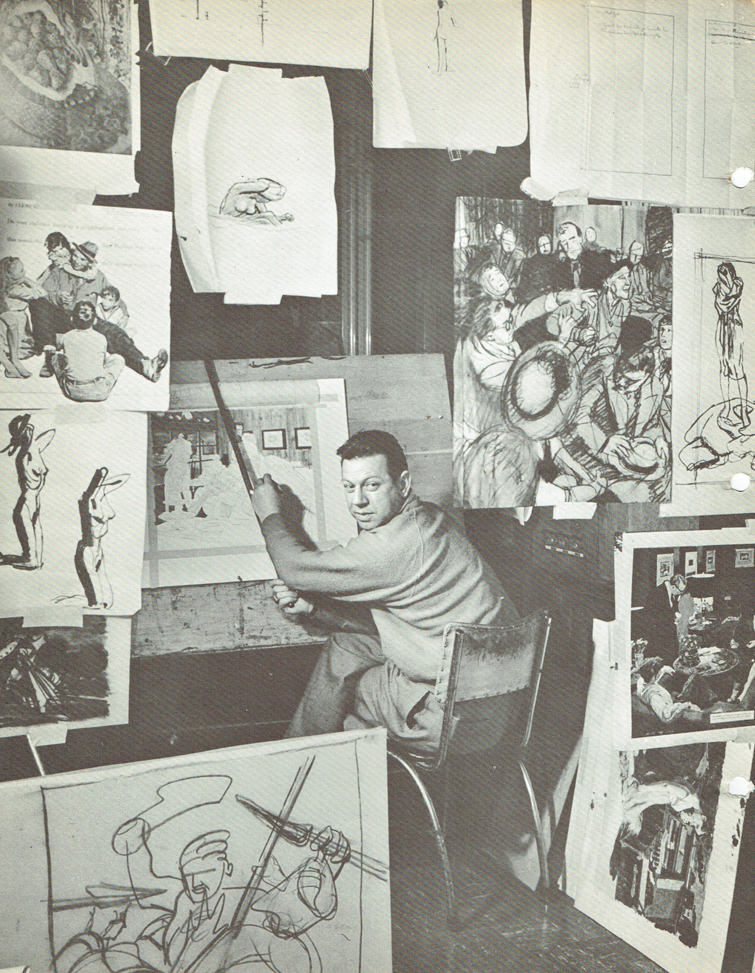
Austin Briggs, one of the founding faculty for the Famous Artists School correspondence course, is considered a bold and principled pioneer who left the field with more artistic freedom than it had when he began. Best known as illustrator, his strip credits include Secret Agent Corrigan and Flash Gordon.
Born in Humboldt, Minnesota, in 1908, Briggs grew up in Detroit, Michigan and studied at the Wicker Art School there. His biography on the Norman Rockwell Museum site notes he began his career at 16, when an illustrator who specialised in automobile pictures took him on as an assistant. Since he was skilled at rendering the human figure, it was his job to paint in pretty girls and prosperous men enjoying the luxurious cars.
Briggs however tired of the demands of advertising work, however, and was eager to break into story illustration, and began doing so, apparently, as early as 1929.
When an art editor at Collier’s showed interest in his drawings in 1932, he packed up and moved to New York, enrolling at the Art Students League and taking on assignments, all in pen and ink, for Collier’s and other magazines, including the upmarket pulp magazine The Blue Book.
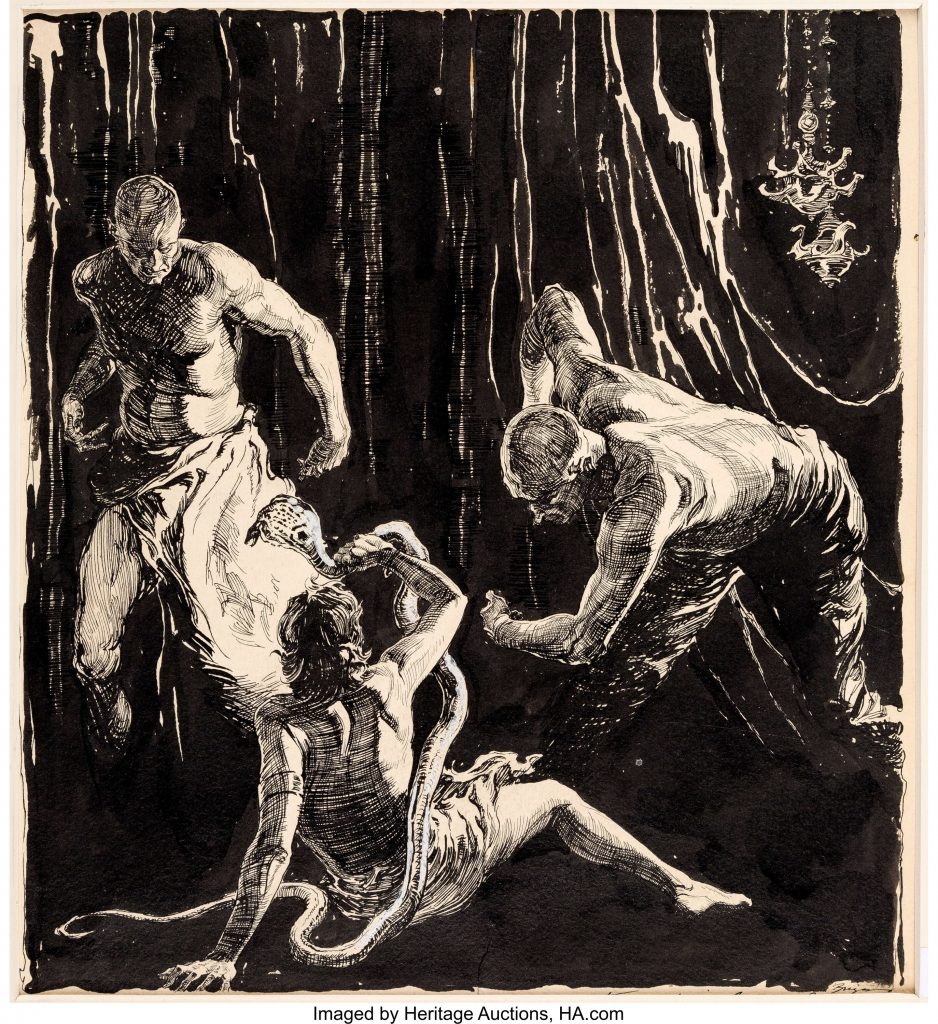
An item on the Society of Illustrators web site notes that it was this magazine that helped Briggs to survive during the 1930s, when America was in the grip of the Great Depression. Its editor, Donald Kennicott, saw to it that his adventure fiction pulp was better illustrated than any of its newsstand competitors and, while he could not pay Briggs slick magazine fees, he did encourage him to experiment and expand. Briggs turned out a great number of illustrations for Blue Book throughout the 1930s, and developed from a gifted imitator of the pen-and-ink artist Joseph Clement Coll into a powerful and inventive illustrator with an approach all his own.
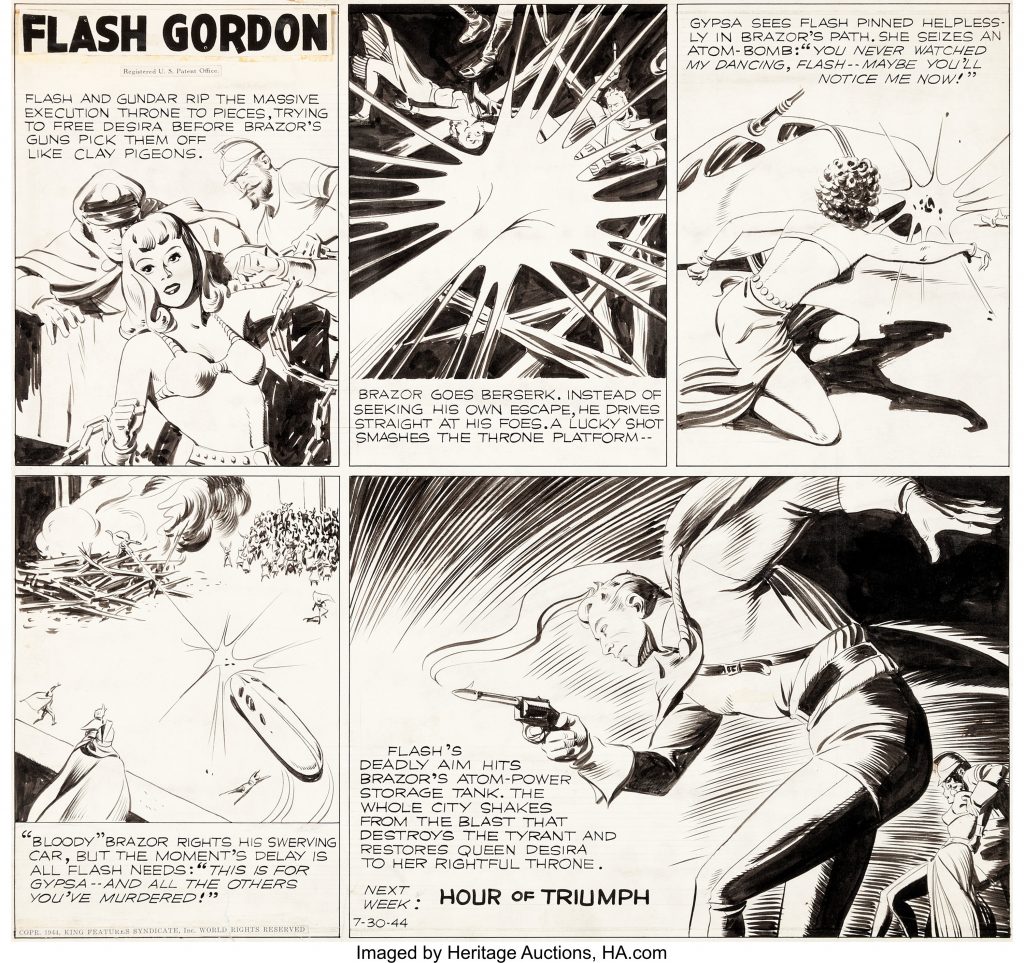
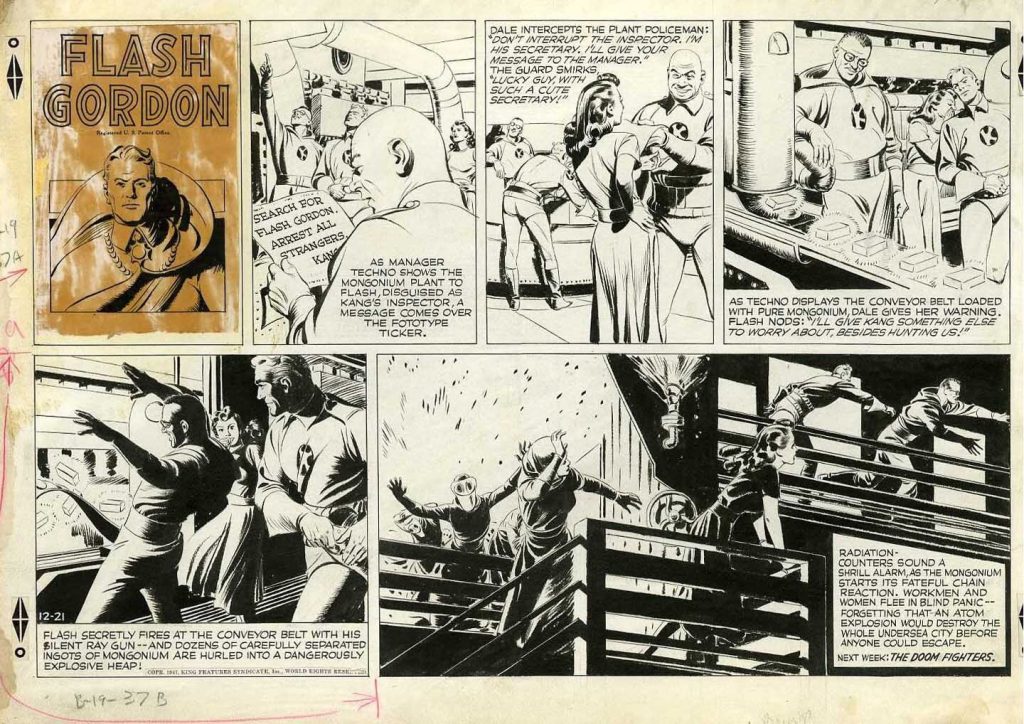
After a chance meeting at a cocktail party, Briggs comic strip career as comic creator Alex Raymond‘s assistant began in 1936, taking over the Secret Agent Corrigan (a strip also known as Secret Agent X-9) strip. From May 1940 to May 1944 he also illustrated the Flash Gordon daily anonymously, and drew the title comic of the comic book Spy Smasher, published in 1941.
Between 1944 and 1948, he also drew the Flash Gordon Sunday pages, but left comics in 1948.
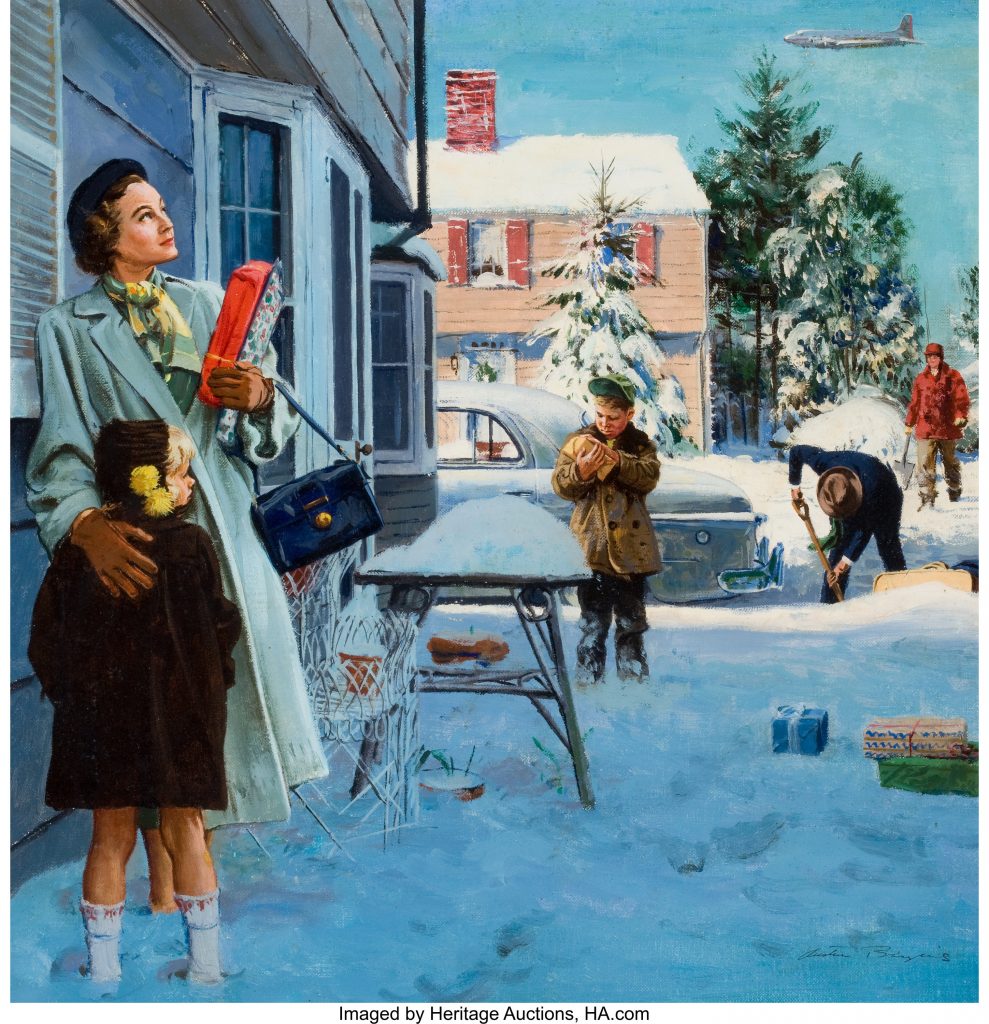
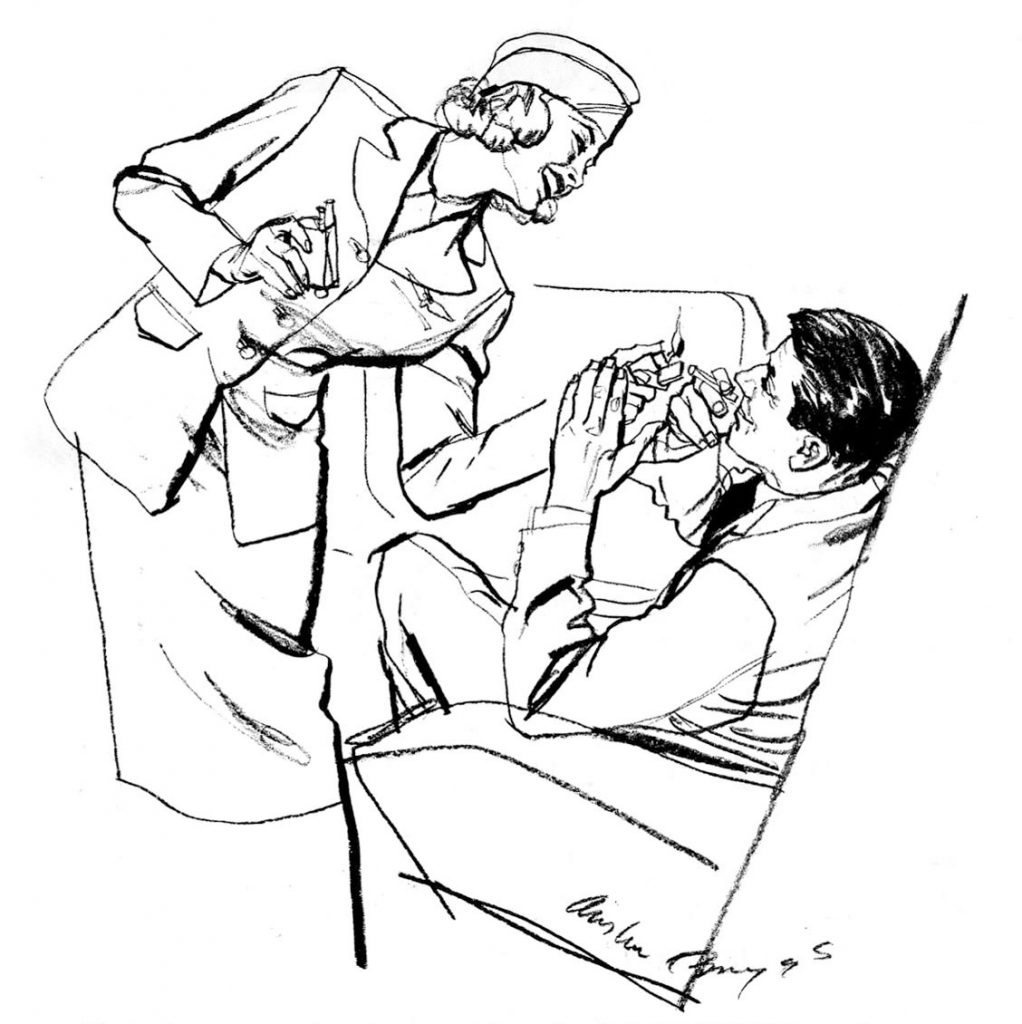
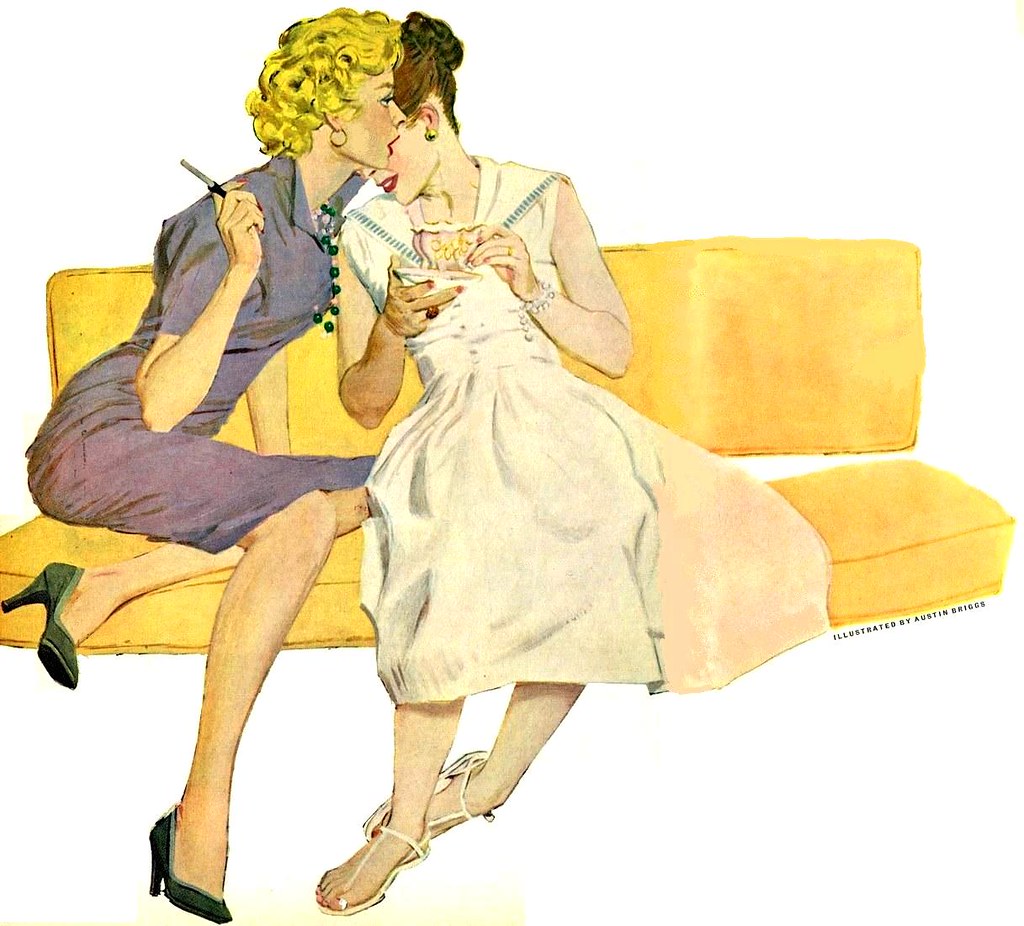
Thenceforward, he focused on illustration work, for books and magazines such as Readers Digest and The Saturday Evening Post, illustrating short stories and providing adverting illustrations for companies such as American Airlines, car companies and Douglas Aircraft.
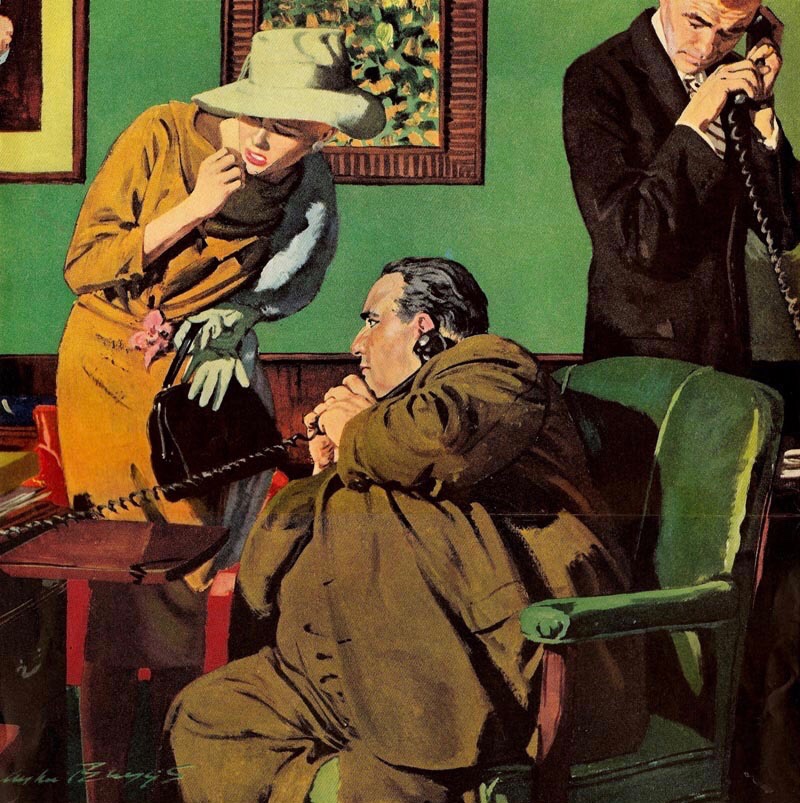
The Famous Artists School’s Advanced Program, an art correspondence course institution which started in 1948, consisted of eleven separate volumes/binders each written and illustrated by a different faculty member – John Atherton, Austin Briggs, Stevan Dohanos, Robert Fawcett, Peter Helck, Fred Ludekens, Al Parker, Norman Rockwell, Ben Stahl, Harold Von Schmidt, Jon Whitcomb. It only lasted for a few years before school president Albert Dorne cancelled the program due to low enrolment and had all the material incinerated, according to an instructor at the school at the time) resulting in the scarcity of the remaining volumes, which command high prices online.
He was elected to the Society of Illustrators’ Hall of Fame in 1969, but died from leukemia in Paris just four years later, in 1973, where he had retired.
Celebrating Briggs much-admired work, Austin Briggs: The Consummate Illustrator, by David Apatoff, was released as very limited edition last year, by Auad Publishing one of their Famous American Magazine Illustrators series. It features 160 pages of some of Briggs best black and white art and a great selection of colour illustrations. Also included is comprehensive biography and a foreword by Briggs son, Austin Briggs, Jr.
“Briggs was especially known for the great subtlety and sensitivity of his drawing with a lithography crayon, charcoal, or similar tools,” notes his Norman Rockwell Museum biography. “He was at the forefront of artists introducing a more realistic informality into illustration… His sketches reveal a deliberate search for offbeat moments, where a subject might be looking away or checking his watch or other things more integrated into daily life.”
“Briggs… never settled into a distinctive style,” notes Donald Pittenger on his informative “ArtContrarian” blog, “shifting over time according to his personal artistic development and the influence of changing illustration fashions and client expectations. What was consistent was his great skill in drawing people
Austin Briggs, artist, born 8th September 1908, died 10th October 1973)
• Austin Briggs: The Consummate Illustrator
Released last year, this book is the latest volume in Auad Publishing’s series highlighting the great American Magazine Illustrators. It features160 pages of some of Briggs best black and white art and a selection of colour illustrations.
The Complete Flash Gordon Library
Beginning the complete library of the greatest science fiction hero of all time, this collection of library editions features all new restorations of the strip. I’ve include the early volumes, some that do not, as far as I know, feature Briggs work, for information purposes
• The Complete Flash Gordon Library: On the Planet Mongo (Volume One) – spanning 1934 – 37
• The Complete Flash Gordon Library – The Tyrant of Mongo (Volume Two) – spanning 1937 – 41
• The Complete Flash Gordon Library – The Fall of Ming (Volume Three) – spanning 1941 – 44
• The Complete Flash Gordon Library – The Storm Queen of Valkir (Volume Four) – Sunday strips
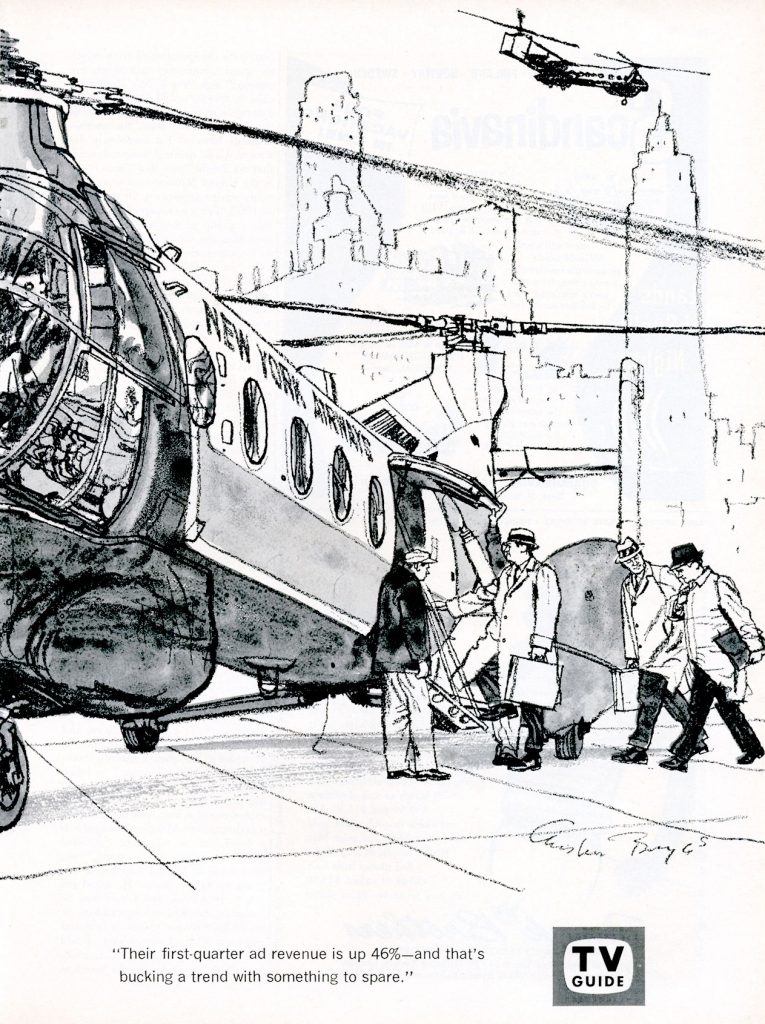
WEB LINKS
• Austin Briggs – Illustration History Biography – The Norman Rockwell Museum
• ArtContrarian – Austin Briggs Gallery
• Illustration Art: Items and Examples of the work fo Austin Briggs
A vintage reading of a 1952 essay by Austin Briggs about the profession of illustration, from The Famous Artists Course. The reading by James Gurney comes from a cassette tape which circulated among a group of friends in 1986. The poster asks that you please excuse the poor audio quality from this old cassette tape, as well as the male-oriented language of the author.
With thanks to David Roach, author of Masters of British Comic Art and more, for sending me down this art rabbit hole = and Alan Harvey for Flash Gordon notes
The founder of downthetubes, which he established in 1998. John works as a comics and magazine editor, writer, and on promotional work for the Lakes International Comic Art Festival. He is currently editor of Star Trek Explorer, published by Titan – his third tour of duty on the title originally titled Star Trek Magazine.
Working in British comics publishing since the 1980s, his credits include editor of titles such as Doctor Who Magazine, Babylon 5 Magazine, and more. He also edited the comics anthology STRIP Magazine and edited several audio comics for ROK Comics. He has also edited several comic collections, including volumes of “Charley’s War” and “Dan Dare”.
He’s the writer of “Pilgrim: Secrets and Lies” for B7 Comics; “Crucible”, a creator-owned project with 2000AD artist Smuzz; and “Death Duty” and “Skow Dogs” with Dave Hailwood.
Categories: Art and Illustration, Comic Art, Comic Creator Spotlight, Creating Comics, downthetubes News, Features, Other Worlds
